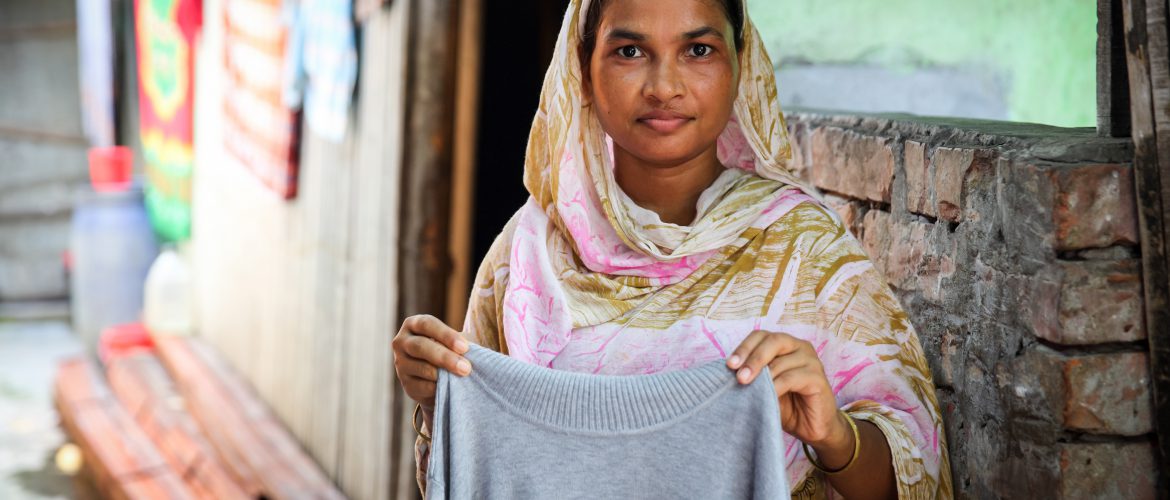As little as two per cent of the price of a piece of clothing sold in Australia makes it to the pockets of workers who are being paid poverty wages by the booming fashion industry, according to a new Oxfam report released today.
The report, What She Makes, shows that while many leading and iconic Australian fashion brands are enjoying increases in revenue, the workers making our clothes – the vast majority of whom are women – are trapped in a cycle of poverty.
“The women making the clothes Australians love and wear are being denied decent lives by being paid poverty wages and are unable to afford even the basics no matter how hard they work,” Oxfam Australia Chief Executive Helen Szoke said.
“Women are working six-day weeks and as much overtime as they can, yet they are forced to live in slums, often separated from their children and families and going hungry as they struggle to make it to their next pay.”
The report includes new research, conducted for Oxfam by Deloitte Access Economics, which shows that on average, just four per cent of the price of a piece of clothing sold in Australia goes toward workers’ wages in garment factories across the globe.
The research – the first of its kind in Australia – shows an even direr situation in Bangladesh, where wages are extremely low and on average, just two per cent of the price of an item of clothing sold in Australia goes to the wages of factory workers.
But Oxfam’s report argues that it is possible for big brands to pay living wages – wages earned in a standard week that cover essential needs including food, housing, healthcare, clothing, transport, education, and some money for unexpected events.
“Deloitte estimates that even if big companies passed the entire cost of paying living wages to all workers on to consumers, this would increase the price of a piece of clothing sold in Australia by just one per cent,” Dr Szoke said. “That is just 10 cents extra for a $10 T-shirt.
“With the profits being made by the factory owners, wholesalers and retailers of the fashion industry, Oxfam says it is more than possible for the cost of paying living wages to be absorbed in supply chains.
“Fashion is big business in Australia – turning over $27 billion last year alone and growing at four per cent a year. Yet the women who make our clothes remain entrenched in lives of poverty, paid as little as 39 cents an hour. It is time for this grossly unfair system to change.”
Dr Szoke said Oxfam was calling on the companies behind Australian fashion brands to commit to paying a living wage to factory workers in their supply chains – and to publishing a step-by-step strategy outlining how this would be achieved over six years.
Alongside the report, Oxfam has released a live company tracker to publicly monitor Australia’s leading fashion retailers – brands such as Kmart, Big W, Bonds, Cotton On and Just Jeans – and their progress on paying living wages.
“Brands have the power and responsibility to ensure workers are paid enough to live with basic dignity,” Dr Szoke said. “We’re asking for Australians to speak up. Together we can hold brands accountable for what women make – telling them loud and clear the time has come to pay living wages.”
For interviews, photos, vision or more information, please contact Amanda Banks on 0411 449 653 or amandab@oxfam.org.au


Comments are closed.